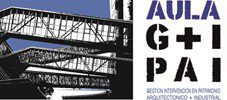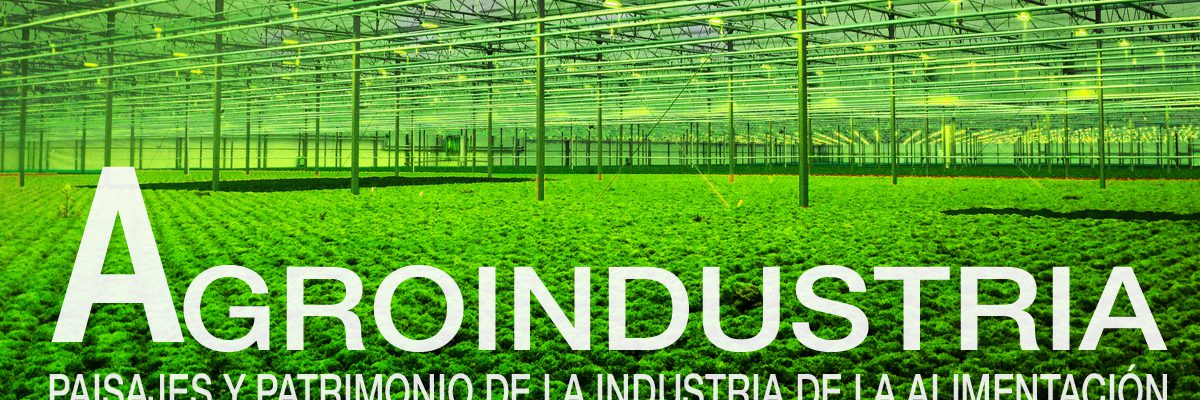IV Seminar Aula Gestión+ Intervención en el Patrimonio Arquitectónico e Industrial. Polytechnic University of Madrid/ ACS Foundation /// February 15th-17th, 2017.
AGROINDUSTRY/Landscapes and Heritage of Food Producing Industry
A cultivated field. The Neolithic revolution and changes from hunting and gathering societies to the sedentary way of life and an emerging agriculture initiated a continuous process of transformations produced by human beings that has not stopped until present. The first manifestation of this was the creation of an anthropised landscape by alterations introduced in farming. Like the second and inevitable manifestation, the first primitive structures and infrastructures emerged in order to exploit and perfection it. Their first remains, still visible in some cases, like for example the irrigation network from the Assyrian époque of Seanquerib, teach us about the importance of the water, its catchment and the creation of networks for the agricultural support on the territory. It must be stressed the importance that the warehousing had from the first moment, connected with the creation of surpluses and in the origin of some of the most beautiful still existing structures, like the warehouses of medieval tithe.
The industrialization of agricultural ambient and animal husbandry, situated by Louis Bergeron like the motor and stimulus of the same Industrial Revolution by an intermediary of perfections of tools and production methods, led finally to ways and forms of exploitations that changed radically the traditional customs and cultivations. In this perspective, the heritage treated in this seminar includes and extensive array of cultivation and animal husbandry, that is, what enters under the most extensive denomination of the farming.
For the complete comprehension of this phenomenon, it is important to attend to different factors that intervene in its conformation, like the propriety structures, the forms of exploitation, the social relations in the production and the technical processes of transformation involved. Although we are going to limit ourselves on the material aspects of this cultural heritage, because already their architectural aspects and engineering offers a variety and richness that cause the astonishment by multiples facets they present themselves under.
In general, a criterion of grouping can be established, for example, in the relation to the presence of the water, in which the first category can correspond to all the agriculture in dry with an extensive tendency and the early use of the mechanisation. To this, we can contrast the irrigation landscape with the presence of different forms of associated hydraulic infrastructure. The third one could be related to the excess of water, areas of inundation where the efforts were concentrated on the evacuation of the same with the maintenance of sufficient levels for agriculture. These categories can be adapted to the Spanish case by introducing the mountain climate or the special conditions on the peninsula.
Comparably, and in the relation with all previously said, for the animal husbandry they are other possible categories in which the areas of meadows or pastures could be associated with to differentiated pluviometry levels. Although already in clear setback, shepherding is an interesting example of the activity with a strong support in forms preceding the industrialisation. Its opposition would be a modern farm, a paradigm of methods and ways of the most advanced tecnicization.
Starting from the rapid urbanisation initiated in the 19th century with the Industrial Revolution, the agriculture and animal husbandry needed to face some increasing and almost exponentially growing demands for the food. Although Matheus made mistakes in his prognosis about the impossibility to satisfy the demographic grow, the challenges presented by the industrialisation of the agriculture meant some enormous efforts in various areas. The rest of all this on the territory, included the transportation network, are evident. Not being stranger to the industrial evolution and obsolescence, the agroindustry left extended heritage of patrimonial elements that should not fall into oblivion and should instead be attended, managed and in many cases recovered.
Thematic lines:
- Production
A.1. Landscapes, risks and changed topographies
A.2. Infrastructures: networks, dams, dykes and water management
A.3. Related constructive typologies
A.4. Technologies
- Processes
B.1. Factories: processed, packed
B.2. Slaughterhouse
B.3. Industries and auxiliary elements
B.4. Technics and machinery
- Distribution
C.1. Transport infrastructure
C.2. Warehouses, industrial units, chambers
C.3. Distribution scales: markets
C.4. Technologies















